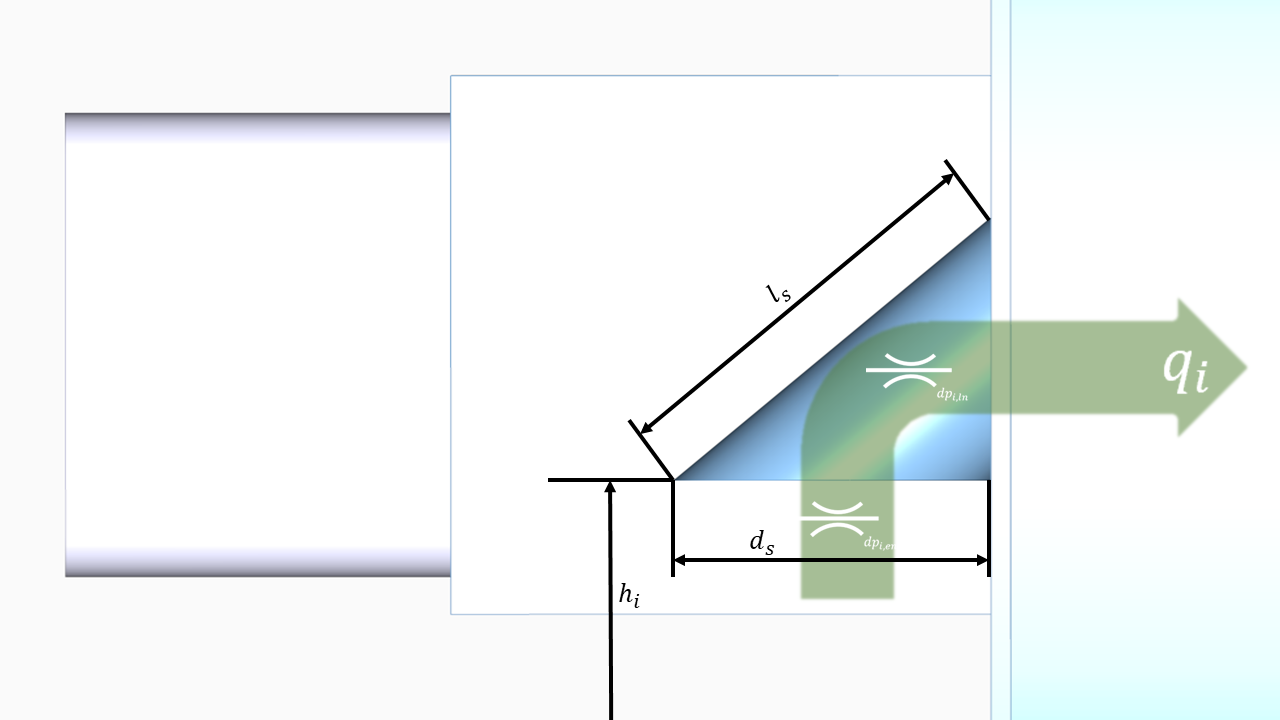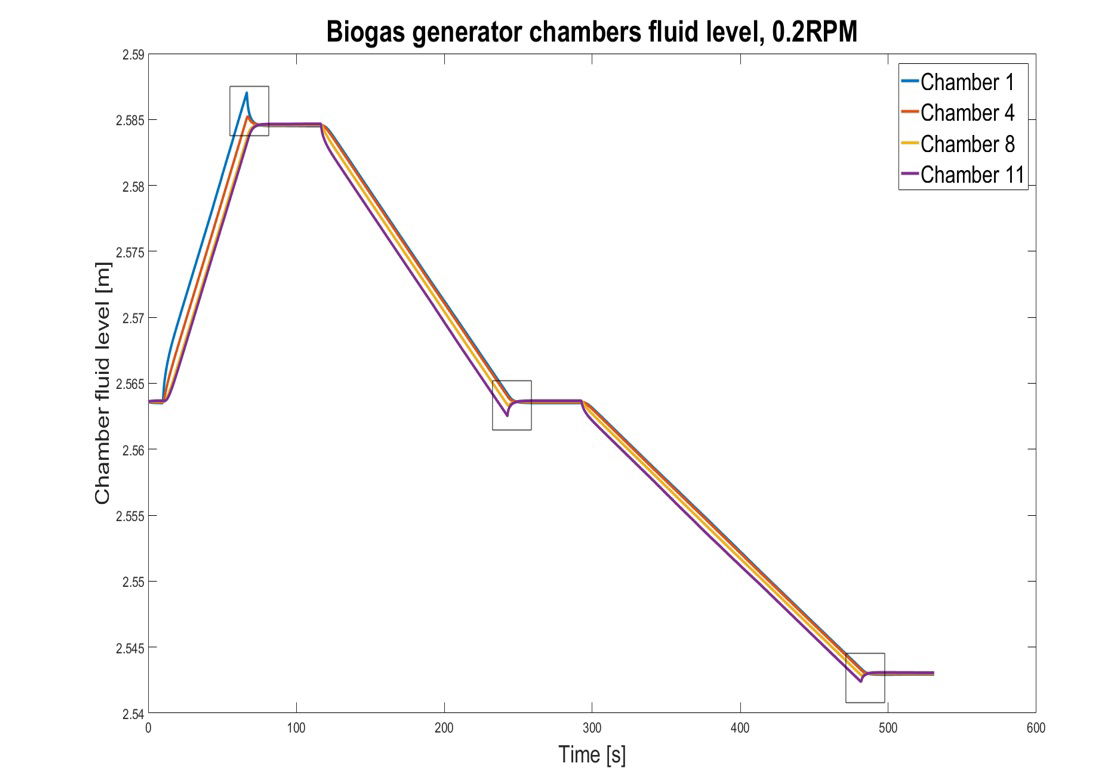Energy & Heat
10/02/2025
Simulation of subsea control module
Modeling of thermal characteristics of novel chassis for aircraft CPU system. Computer systems of modern aircraft are charged with necessity for greater processing capabilities, minimizing the aircraft's weight and power consumption the same time. Following, standard Liquid Flow-Through (LFT) electronics chassis seeks for improved heat spreading capacity and simplified design. The Customer, 1st Tier Airbus supplier has developed new type of chassis for aircraft CPU system engaging liquid cold-plate technology for cooling of 10x CPU and 20x SSD package. The goal of the project was to asses temperature pattern inside the cabinet to check for acceptable conditions for electronics in various ambient pressure and temperature conditions. We were responsible for coupled fluid-solid simulations of temperature pattern inside the container of the subsea module. The primary role of contact thermal resistances between parts of different material properties has to be underlined. The project put high demands towards geometry manipulation and pre-processing, with few hundreds components CAD model, among which majority required unusual level cleaning and simplification works, which took over 50% of general work time.
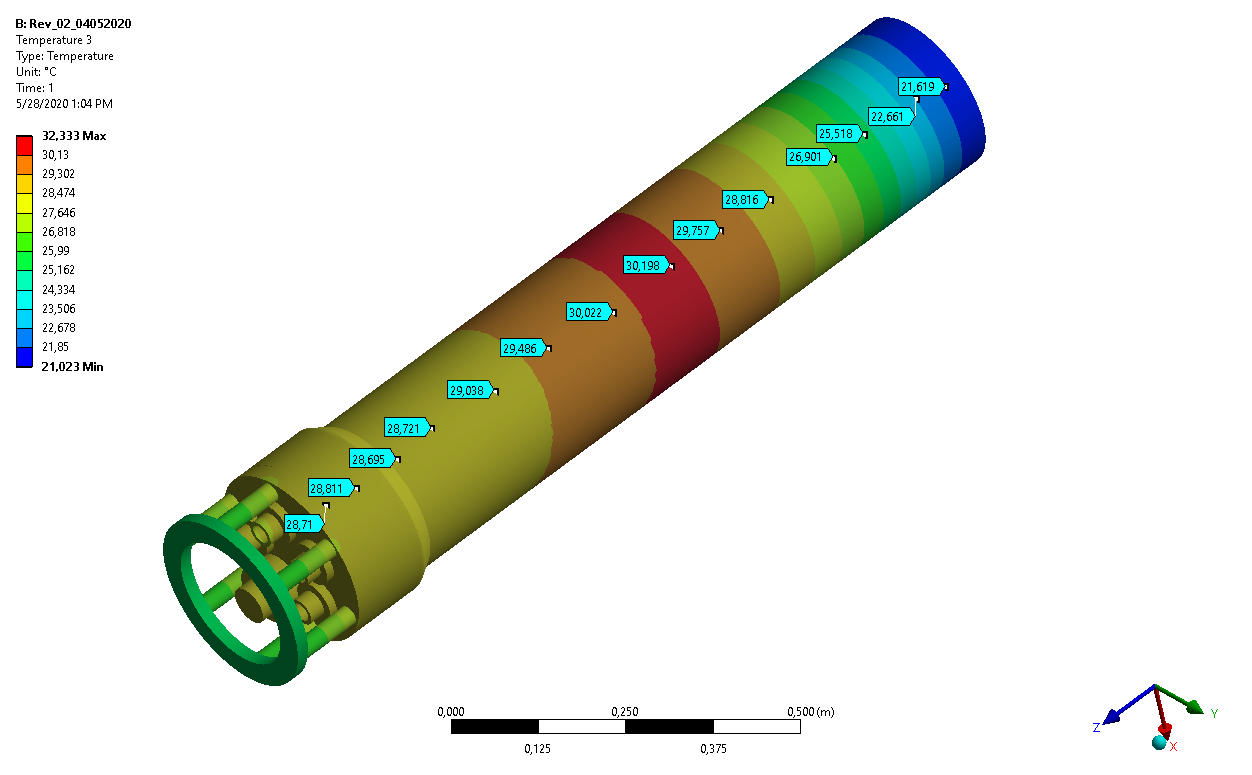
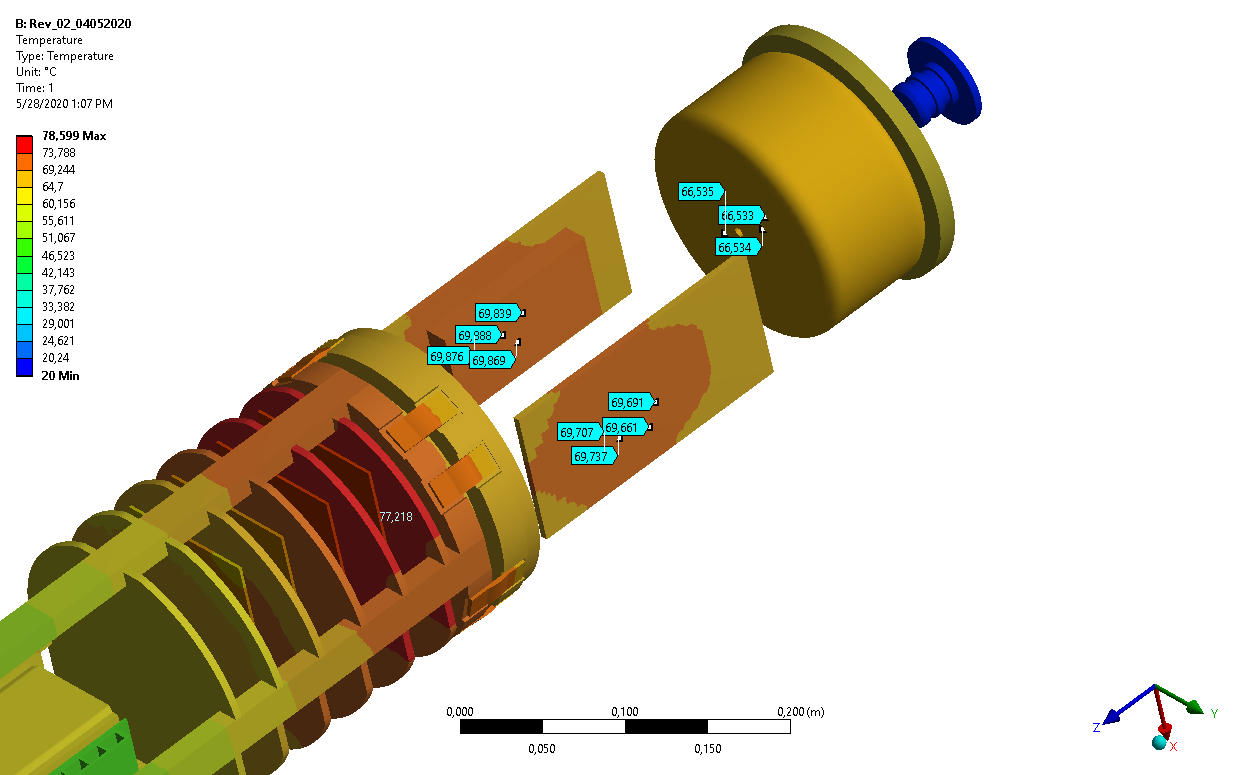
Simulation of novel aircraft electronics chassis
Modeling of thermal characteristics of novel chassis for aircraft CPU system. Computer systems of modern aircraft are charged with necessity for greater processing capabilities, while also minimizing the aircraft's weight and power consumption. Therefore, standard Liquid Flow-Through (LFT) electronics chassis seeks for improved heat spreading capacity and simplified design. The Customer, 1st Tier Airbus supplier has developed new type of chassis for aircraft CPU system engaging liquid cold-plate technology for cooling of 10x CPU and 20x SSD package. The goal of the project was to asses temperature pattern inside the cabinet to check for acceptable conditions for electronics in various ambient pressure and temperature conditions. We were responsible for coupled fluid-solid CFD simulation of temperature distribution in the chassis under boundary conditions representing varying flight states. While heat transfer in solid parts of the domain can be relatively easily handled by CFD codes, closed-enclosure convection may be challenge for simulation convergence due to unsteady flow patterns. Real gas properties has to be used for low-pressure air. Another significant achievement was smooth transition through pre-processing phase, with over 1000 components CAD model setting up high requirements towards geometry cleaning and meshing works.
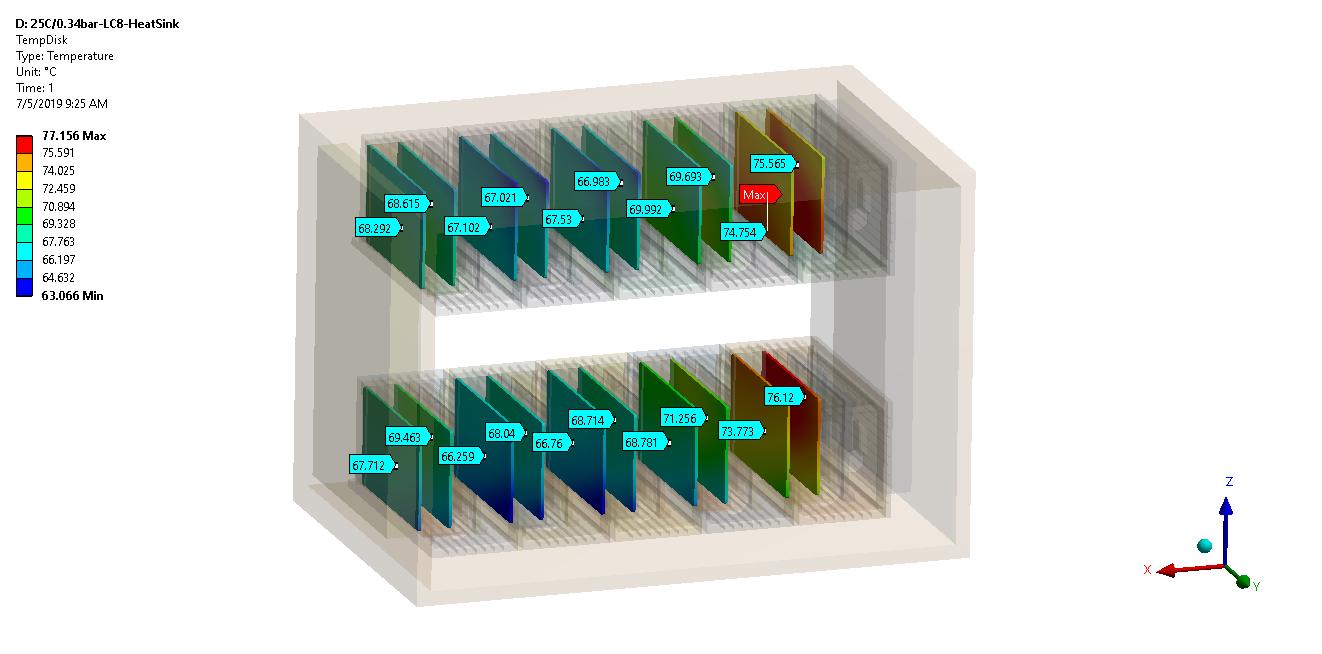
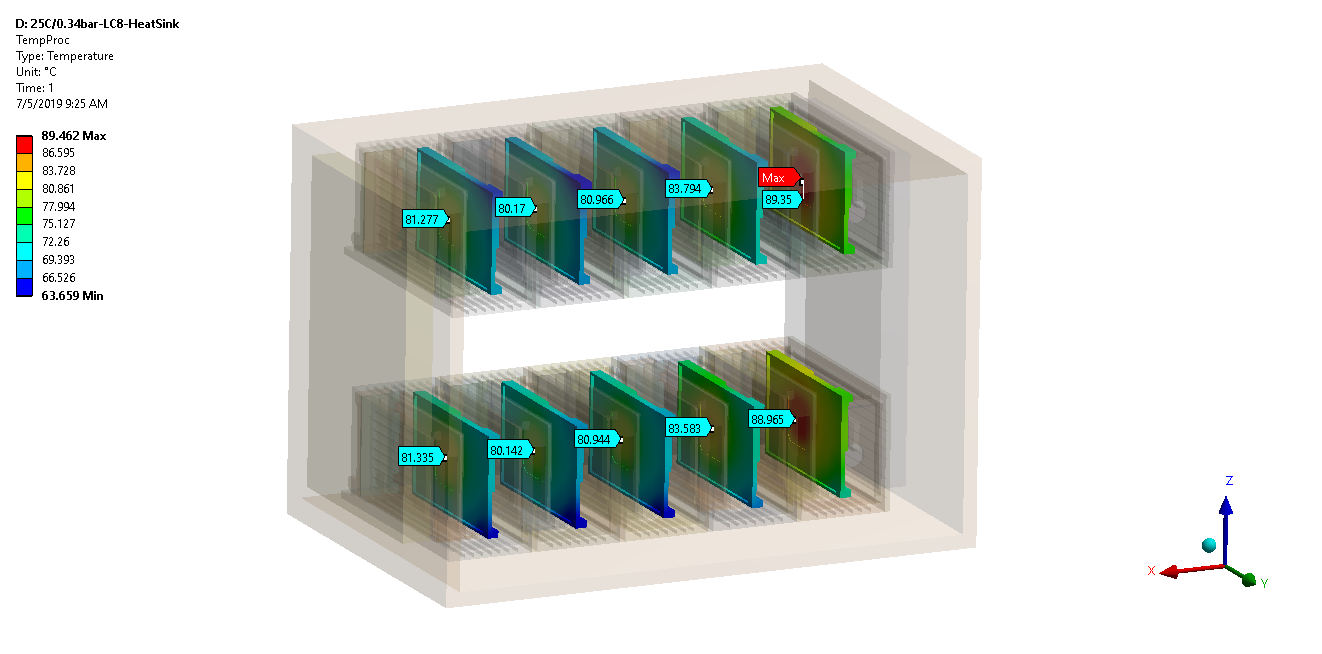
Biogas generator development
Antec Biogas AS is revolutionizing biogas production with its innovative plug-flow bioreactor. Due to process complexity, experimental optimization is limited, necessitating simulations previously unused in the company’s workflow. Our task was to estimate transient fluid level fluctuations and flow rates inside the bioreactor chambers. Applied reduced 0D/1D approach shall demonstrate feasibility of system modeling before integrating 3D CFD into Antec’s PDP. With approx. ±0.5mm fluid level accuracy, model provided critical insights and optimization recommendations for enhanced device performance.
